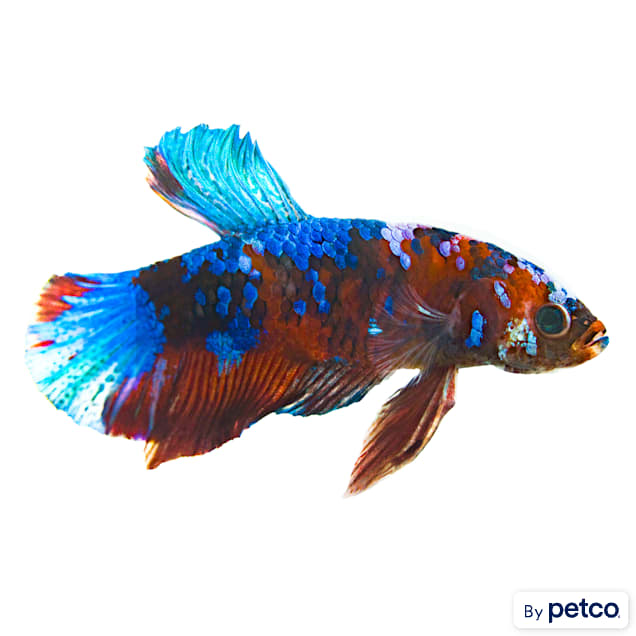Exactly how to Choose the Right Betta Fish for Your Fish tank
Exactly how to Choose the Right Betta Fish for Your Fish tank
Blog Article
Just How to Reproduce Betta Fish Efficiently: Specialist Techniques and Insights for Hobbyists Aiming To Expand Their Betta Collection
Breeding Betta fish needs a nuanced understanding of genetics and ecological conditions, making it essential for hobbyists to come close to the process with both diligence and treatment. Producing an ideal breeding environment, selecting the appropriate pairs, and observing the ins and outs of their courtship habits are fundamental steps that can substantially influence the outcome. The succeeding care of the fry is critical for guaranteeing their healthy and balanced advancement. As we check out these essential elements, it comes to be clear that successful reproduction is not almost the initial pairing however includes a wider approach that values careful consideration.
Understanding Betta Fish Genes
Understanding the genetics of Betta fish is important for effective reproduction, as it influences characteristics such as shade, fin shape, and habits. Betta fish show a varied selection of shades and patterns, greatly established by their genetic make-up.
Along with coloration, fin morphology is another considerable element of Betta genetics (betta fish). The shape and size of fins are affected by various genes, including those that figure out whether the fins are brief, long, or veil-shaped. Recognizing these hereditary variations aids breeders anticipate the phenotypic outcomes of their offspring
Furthermore, behavior attributes such as aggression and territoriality can also be influenced by genetics. These actions play a vital duty in the breeding process, as they can affect generating success and the general personality of the resulting fry. By comprehensively recognizing these hereditary principles, dog breeders can make enlightened decisions, ultimately improving their breeding programs and accomplishing preferable outcomes.
Preparing the Breeding Environment
Producing an optimal breeding atmosphere is important for the successful reproduction of Betta fish. The first action in preparing this setting is to select an appropriate breeding storage tank, ideally varying from 5 to 10 gallons.
Next, take into consideration making use of a sponge filter or an air stone to offer gentle water flow without developing strong currents that can emphasize the fish. It is important to set up plants or reproducing cones to use concealing areas and promote convenience for the female during the spawning procedure. Drifting plants, such as Java moss or water sprite, can likewise create an extra all-natural atmosphere while assisting in bubble nest building by the man.
Before presenting the breeding sets, make certain the water is conditioned and devoid of unsafe chemicals, such as chlorine or hefty metals. betta fish. Regular water adjustments should be conducted to preserve ideal water quality, improving the possibilities of successful breeding. With these preparations in position, the breeding environment will sustain the health and health of both Betta fish
Choosing Breeding Pairs
Choosing the best breeding pairs is vital for attaining successful Betta fish recreation. Healthy and balanced Betta fish show vivid colors, clear eyes, and energetic habits.
Character is an additional important consideration, as Betta fish are known for their hostile nature. It is advisable to choose a male and female that exhibit compatible characters to decrease stress and anxiety during the breeding process. A tranquil male can motivate a smoother courtship, while a lady that is also hostile might interrupt the procedure.
Hereditary background likewise plays a considerable duty in the high quality of the offspring. Reproducing fish that are genetically diverse can reduce the danger of genetic health and wellness problems and enhance the general vigor of the fry. It is useful to look into the lineage of go to this web-site both the male and woman, focusing on desirable traits such as fin kind, you can find out more shade patterns, and size.
The Breeding Refine
The reproduction process of Betta fish requires careful planning and interest to detail to make sure a successful outcome. It is vital to prepare an ideal breeding tank, preferably a 5-10 gallon fish tank with a temperature maintained at 78-80 ° F. The storage tank must be geared up with a heater, filter (ideally sponge type to prevent strong currents), and plenty of water plants for the female to hide.
Once the atmosphere is set, introduce the picked breeding pair to the container, enabling them to adjust. Observe their behavior; the man will display intricate courtship rituals, including flaring his fins and developing a bubble nest. If the woman reveals passion, she will present vertical stripes indicating preparedness for spawning.
When the lady is receptive, the pair will certainly engage in a breeding welcome, during which the male fertilizes the eggs. Maintaining optimal water problems throughout this duration is important for the development of healthy Betta fry.
Taking Care Of Betta Fry

Feeding Betta fry is critical, as they call for a diet high in protein. They can be fed infusoria or fluid fry food, transitioning to carefully smashed premium pellets as they expand. Feed little parts several times a day to motivate navigate here healthy development without straining the tank with leftover food.

As they develop, monitor their growth very closely and separate any hostile individuals to avoid harm. By offering a supporting environment and correct nutrition, hobbyists can efficiently increase Betta fry into dynamic, healthy fish, eventually enhancing their reproduction undertakings.
Final Thought
Effective Betta fish reproduction calls for meticulous focus to hereditary selection, environmental problems, and look after the fry. By recognizing the genetics of Betta fish and preparing an appropriate breeding setting, enthusiasts can enhance the chances of generating dynamic, healthy offspring. Selecting compatible breeding sets and carefully monitoring the courtship and generating processes are vital. Providing ideal care for the fry guarantees their healthy and balanced development, adding to a thriving Betta collection.
Report this page